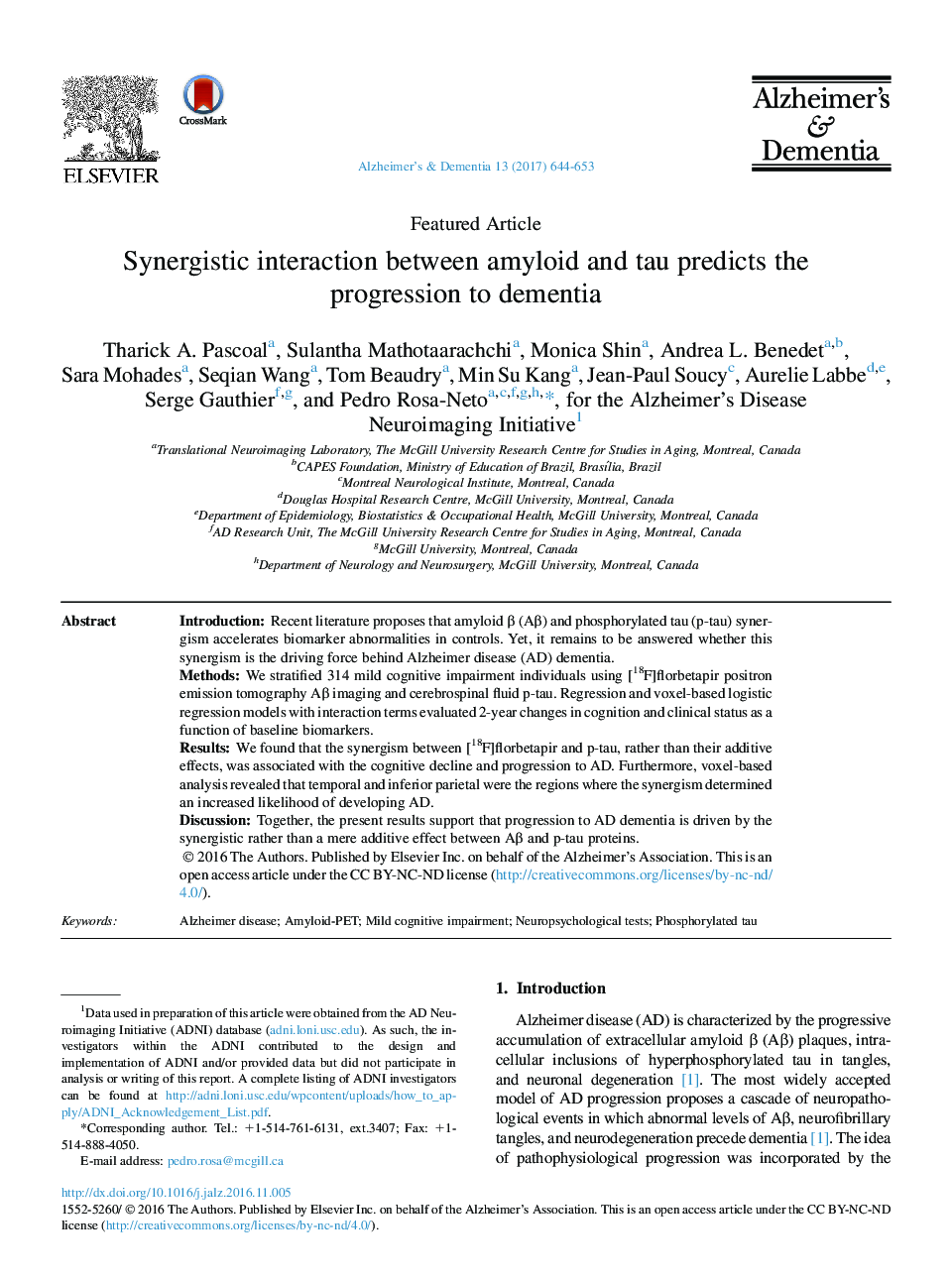| Article ID | Journal | Published Year | Pages | File Type |
|---|---|---|---|---|
| 5623665 | Alzheimer's & Dementia | 2017 | 10 Pages |
IntroductionRecent literature proposes that amyloid β (Aβ) and phosphorylated tau (p-tau) synergism accelerates biomarker abnormalities in controls. Yet, it remains to be answered whether this synergism is the driving force behind Alzheimer disease (AD) dementia.MethodsWe stratified 314 mild cognitive impairment individuals using [18F]florbetapir positron emission tomography Aβ imaging and cerebrospinal fluid p-tau. Regression and voxel-based logistic regression models with interaction terms evaluated 2-year changes in cognition and clinical status as a function of baseline biomarkers.ResultsWe found that the synergism between [18F]florbetapir and p-tau, rather than their additive effects, was associated with the cognitive decline and progression to AD. Furthermore, voxel-based analysis revealed that temporal and inferior parietal were the regions where the synergism determined an increased likelihood of developing AD.DiscussionTogether, the present results support that progression to AD dementia is driven by the synergistic rather than a mere additive effect between Aβ and p-tau proteins.
